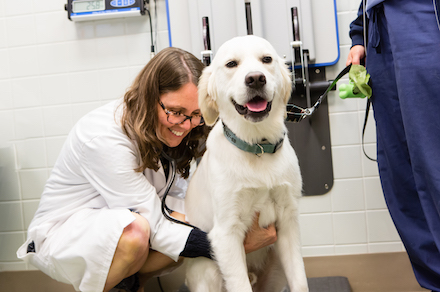Coronavirus in Dogs and Cats

Coronavirus in Dogs and Cats
The news is full of stories about the ongoing and troubling coronavirus outbreak. Scientifically termed 2019-nCOV, most are calling the virus the “Wuhan virus” after the Chinese city where the outbreak appears to have originated. Early data suggests an animal source of the virus, and this has pet owners concerned about the health of their favorite fur person. But there is no need to fear: the Wuhan virus poses no threat to spread to or from dogs and cats, according to the World Health Organization, as of the publication of this blog post.
However, the 2019-nCOV coronavirus is not the only coronavirus. Coronaviruses describe a classification of viruses that can indeed translate to dog and cat infections. In this blog post, I’ll discuss the topic and what it means for your pet.
Coronaviruses
The name “coronavirus” is derived from Latin and Greek meaning crown or halo. This describes the virus’ appearance using a technique called electron microscopy. Coronaviruses are distributed widely throughout the animal kingdom and include the common cold virus. Fortunately for us, no known coronaviruses in dogs or cats can spread to humans.
Canine Coronavirus
Dogs are susceptible to two coronaviruses: canine enteric coronavirus and canine respiratory coronavirus. Canine enteric coronavirus causes mild diarrhea and is of limited concern to dog families. However, its symptoms can be similar to a much more serious condition: parvovirus (which is not a coronavirus). Due to its severity, parvovirus vaccine is considered a “core” vaccine that all dogs should receive. In contrast, canine enteric coronavirus is not a core vaccine due to the mild nature of the infection.
The canine respiratory coronavirus is related to the common cold virus and was first identified in 2003. It is one of the many causes of kennel cough. The signs of this virus are mild upper respiratory ones, including: sneezing, coughing and nasal discharge. Occasionally, kennel cough progresses to pneumonia.
Feline Coronavirus
Fifty to ninety percent of cats will experience coronavirus infection in their lifetime, which results in mild diarrhea that usually clears on its own. However, in less than 5% of cats, coronavirus can lead to feline infectious peritonitis, which is fatal.
Reliable Sources of Coronavirus Information
Because the 2019-nCOV is a new infection in humans, there is more unknown than known about this virus and its behavior. There is also a great deal of misinformation about 2019-nCOV. To keep up with the news and developments of this situation, use reputable sources of information such as the World Health Organization, Centers for Disease Control or the World Organization for Animal Health (OIE).































